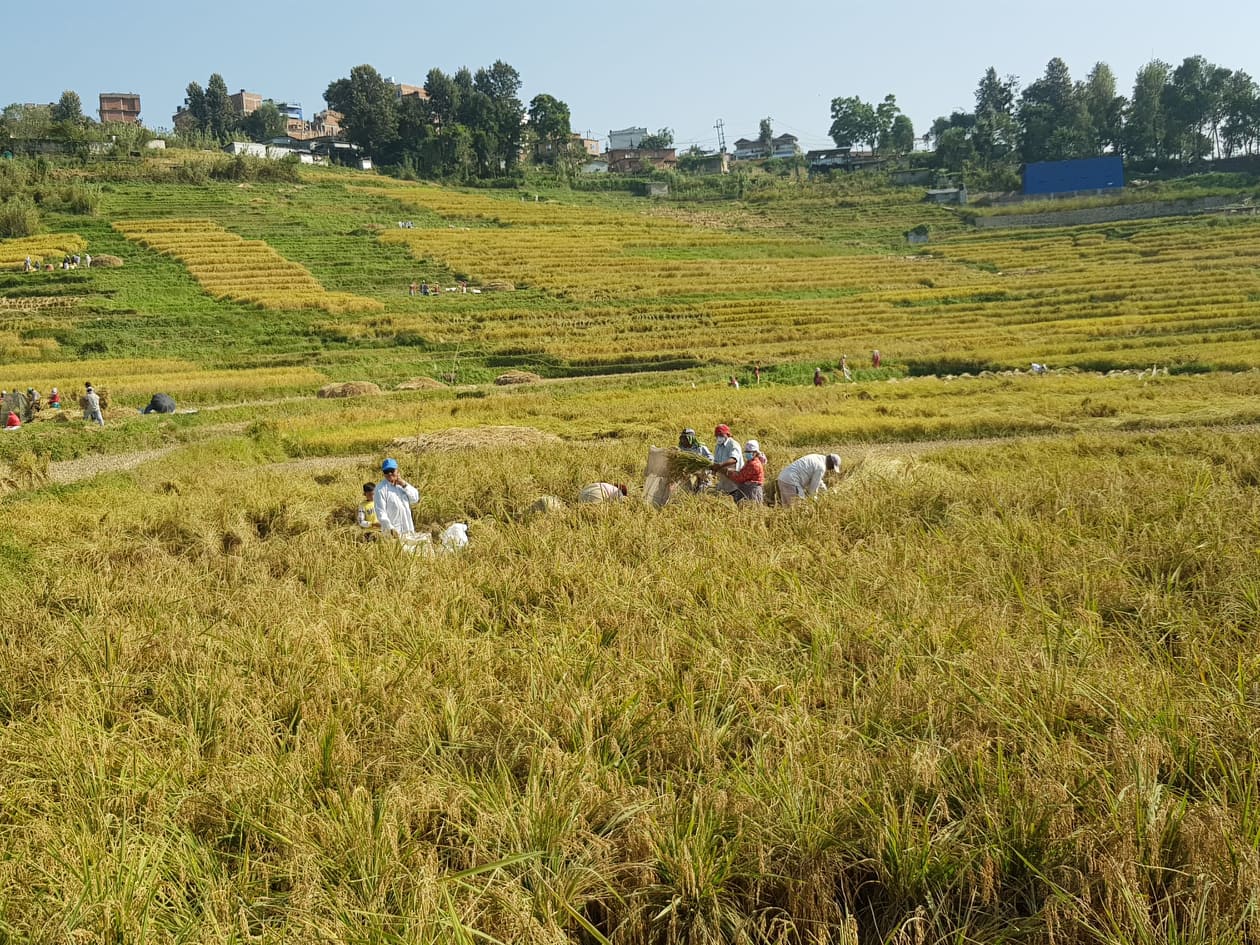Survival of Khokana and its mustard fields
Riot police using teargas against a community protesting the expropriation of their traditional agricultural fields is hardly worthy of a democratically-elected government. This is particularly questionable when the area falls under an officially demarcated tentative World Heritage property. Furthermore, the proposed infrastructure development consists of various disputed projects, which themselves need to be critically reviewed. A quick appraisal of Khokana and its landscape would be necessary before proposing an appropriate way forward.
“Khokana, the vernacular village and its mustard-oil seed industrial heritage” was inscribed on the World Heritage Tentative List on May 23, 1996. The short description of the heritage site on the UNESCO World Heritage Centre website states: “Khokana is a unique village which can be taken as a model of a medieval settlement pattern with a system of drainage and chowks. It houses chaityas and a Mother Goddess temple. The mustard-oil seed industry has become the living heritage of the village”.
The proposed criteria for this site to be of outstanding universal value (OUV) are given as (i), (iii), (iv) and (vi). Khokana would have attributes that would include (i) a masterpiece of human creative genius, (iii) a testimony to a cultural tradition, (iv) an outstanding example of a type of building, architectural or technological ensemble or landscape and most notably (vi) an “outstanding example of a traditional human settlement or land-use, which is representative of a culture (or cultures), or human interaction with the environment, especially when it has become vulnerable under the impact of irreversible change”.
The village of Khokana was ravaged by the 2015 Gorkha Earthquake. There have been various efforts made by local and international agencies and experts in assisting in the appropriate rehabilitation of the village. With additional effort, planning and steady support, the village will surely be able to recover.
Closely linked to the identity of the village are the fields, which have largely been protected, even though most of the Kathmandu Valley has been covered by haphazard or badly planned urban sprawl. The fields of Khokana are possibly some of the last areas of traditional farmland that still exists within the Kathmandu Valley. The government planners and politicians must understand that unbuilt areas are not necessarily there to be built on. These open spaces have their own functions, which are as important as of the built-up areas.
The fields of Khokana are being threatened by various infrastructure development projects, which include roads and transmission lines. According to a publication of ICOMOS Nepal, “Rural Landscapes in Nepal”, this landscape is facing the threat of five projects, “the Kathmandu Tarai Fast Track highway project, the Outer Ring Road, a high power transmission line and a vehicular corridor to be built along the river banks of the Bagmati River, and there is also talk of an upcoming satellite city to be planned in the area”. Each of these projects that the government has given priority to needs to be reviewed, and the authoritarian approach must transform to align with the new Constitution of decentralisation and respecting local communities.
So, how could we move forward on resolving this controversy, protecting Khokana and its fields, while resolving the requirements of infrastructure development? The area of Khokana, with its historic settlement and agricultural land, needs to be officially demarcated. This demarcated area must be given a special status of protection. Land-use planning must be developed together with the local community, which is then strictly enforced. The various proposed infrastructure projects need to be reviewed, and where necessary, alternative alignments need to be planned. This conflict needs to be resolved. The Ministry of Urban Development must take the lead, in close collaboration with relevant ministries, the provincial government, the Department of Archaeology and the local communities.






